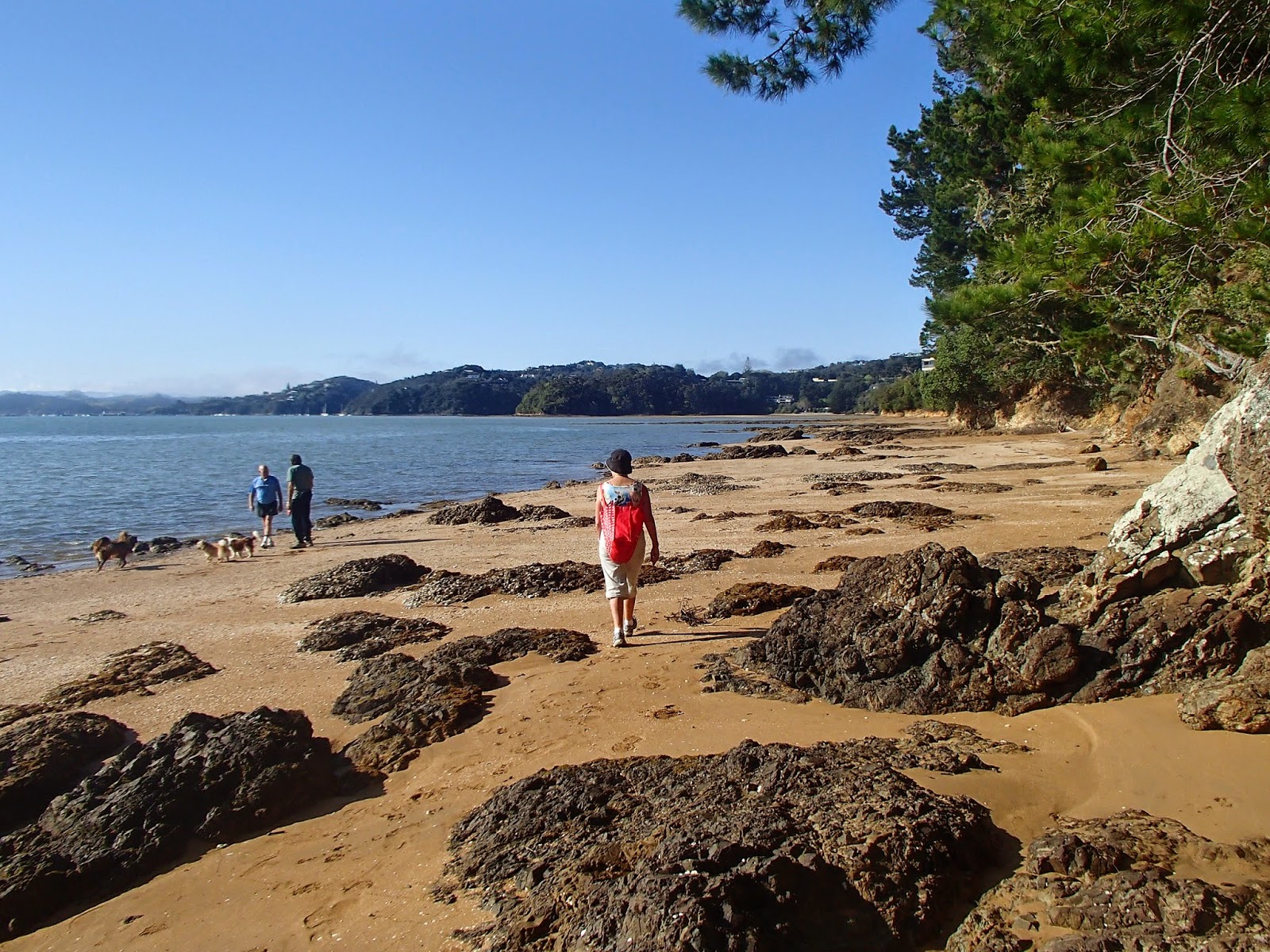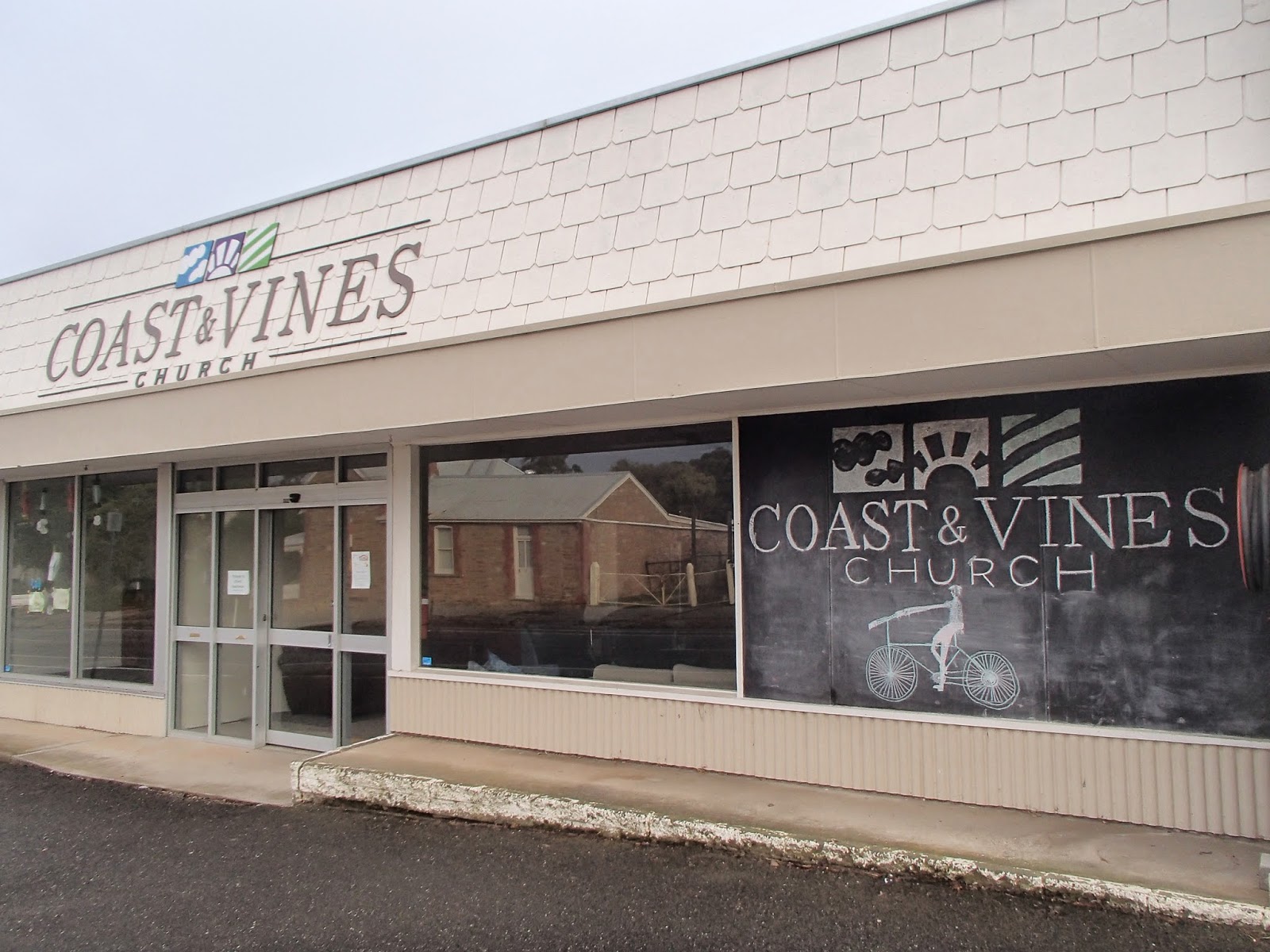 |
| Aquatic life off Poor Knights Islands |
When we decided on a road trip around Northland, we discovered that a surprising number of our contemporaries were established in the winterless north: Like the snowbirds of the US, who abandon Chicago for Florida, Kiwi baby boomers head over the Auckland harbour bridge and don't look back. Mind you, we discovered that Auckland's urban sprawl is hot on their heels, as tastefully landscaped housing developments spread north across the farmland.
First stop was an old school friend of Marg's, settled in a cliff top house on the Whangaparaoa peninsula. Helen and Jim had a great view north, fishing and swimming from the beach below their house, but Jim's road cycling group are finding that their morning rides are becoming more less enjoyable as they coincide with the commuter congestion.
We went on to visit Bob and Helen, who have for years pursued a nomadic lifestyle (perhaps due to Bob's former existence as a sea captain) and have gone from a comfortable Remuera town house to pioneering a lifestyle block near Warkworth. We got a tour of the house site - well chosen in the shelter of a hill to the north, but not so high as to block the winter sun, covenanted block of native forest blocking the prevailing westerlies, and a restful view south up a rural valley.
We walked Warkworth, a transport nexus in the days of coastal scows, saw the
Jane Gifford heading off with a cargo of tourists, and admired a charming steam launch moored on the quay.
On to Whangarei, to catch up with Brian and Sue. Brian, although an engineer by profession, is a serial lifestyle blocker: set him down in any city, and within weeks he'll have acquired 10 acres of land, 30 head of sheep and a shed full of agricultural equipment. The Whangarei estate was impressive - a relationship with a local digger driver with access to large rocks had resulted in a small lake with islands, and the cantilever framed shed could have been used for country dances in the days when that was fashionable. They were pleased with the move north - Sue felt the crux had been a business trip to the balmy north "I got back to Wellington - and it was SNOWING".
We had arranged a trip out to Poor Knights islands with
Dive! Tutukaka. Poor Knights, about an hours boat run off the coast, is a cluster of pinnacles, with steep rock faces dropping straight into the sea, and currents connected with the Australian coast that result in occasional geographically confused tropical fish enhancing the fishlife of the marine reserve, making it a mecca for divers and snorkelers
Waiting for the boat to depart, we discovered we had a special passenger - a Mollymawk being returned to sea after rehabilitation. The massive bird was housed in a comfortable cardboard box, but was let out for a stretch on the wharf, to the delight of passers by.
Once we'd arrived off the Poor Knights, in a sheltered spot by Rikoriko cave, the Mollymawk went on its way to a clicking of iPhones, and we donned heavy duty hoods, vests and wetsuits (OK, the warmth of the water is relative - it was still spring) and splashed in to a watery world of clouds of fish. The buoyancy of the wetsuits meant we couldn't dive, but the views as we explored along the edge of the cliffs was amazing. You could explore up narrow channels into the rock face, turning back to see the clouds of fish silhouetted around the entrance.
Over lunch back on the boat, the guides told us of the history of the island, how the resident iwi enjoyed a porcine monopoly after Captain Cook had dropped off some of his eponymous pigs, but lost both pigs and lives in a retribution raid.
Then we went back in for another spell of snorkelling, and I lost track of time, entranced by sights such as a green sea snake wending it's way through the seaweed, and was the last back on board the boat before running back to Tutukaka.
We'd ran out of friends to visit, but Paihia had plenty of motel vacancy signs, and the
Outrigger seemed as good a choice as any.
One reason for visiting the Bay of Islands was the
Twin Coast Cycle Trail - one of the Nga Haerenga cycle trails. It's not yet complete, and I'd found varying information on how much was open. We decided to start from Opua, where the trail starts in the back of the shipyards, and see what happened. The gravel trail up the Kawakawa inlet was fine as was the weather. The rail lines have been retained under the gravel, and sometimes emerge to keep cyclists alert. At Taumarere bridge the cycle path clipon had just been completed so we could bike across what is supposedly the longest curved rail bridge in NZ - though I'd have thought
Hapuawhenua rail viaduct near Ohakune was longer. On the other side, a group of rail enthusiasts were having smoko in their boxcar that had been shunted through from Kawakawa, and confirmed that the plan was to extend the heritage rail line through to Opua - though it's not clear how this will coexist with the cycle trail.
At Taumarere the cycle trail ceases, and a hilly 3km on the main road took us into Kawakawa, and the next section of the trail through to Moerewa. Moerewa is definitely Tangata whenua country - no middle class flight from colder climes here. People say "kia ora" because that's how they say hello, not because they want to be bicultural. The United Tribes Confederation flag flew over a veggie patch, and the Marae with its imposing archways is well maintained.
For the moment the cycle trail finishes here (though secondary roads would provide a good route through to the next completed section at Kaikohe) so we headed back the way we'd come, eating our picnic lunch in the Kawakawa domain while the guys with the ride-on mowers waited patiently for us to finish.
We still had the afternoon, so decided to do the Kaikohe-Okaihau section as a vehicle swap - Marg dropped me at the Kaikohe end, drove around to Okaihau, and we passed in the middle. This section has been established for some time, and follows the route of the
Okaihau express, immortalised by 1950s folk singer Peter Cape. There are good informational signs, a tunnel long enough not to be able to see the other end, small mountain bike tracks branching off the main route, and a good view of Lake Omapere, where "The fireman takes the bucket, the driver takes a swim".
Next day we tackled the "
Full circle walk", which connects bush and coastal trails with the ferries, enabling a circuit Paihia - Opua - Okiato - Russell. Another brilliantly fine day (though the locals were as surprised at this as we were) as we walked along the beach to Te Haumi Bridge, then took to the bush track sidling and dipping into bach bordered beaches.

At Veronica Point we climbed up to a solidly constructed viewpoint, then dropped down to the wharf at Opua. With a boat every 10 minutes one can be relaxed about the schedule, and soon we were climbing up the road to the site of NZ's first capital - not a lot to see other than the well that provided the first legislators water - then join the Okiato to Russell walkway. this actually takes about three hours, so to avoid distress the signs simply tell you how long it is for the next section, so it took us a while to realise that it was going to be late lunch in Russell. Fortunately a swim at Pipiroa Bay set us up for the next few hours of up and down walking through attractive Kanuka and Kauri.
We made it to Russell and settled down at a waterfront cafe. Breathless cellphone calls brought the news that the auction of my mothers house in Auckland confirmed the inflated state of the Auckland property market, and that we could probably afford to splash out on an extra cake and coffee.
I'd also been keen to try kayaking, so next morning Marg consented to join me in a double kayak up the Haruru River, to nose up to the rather grubby water pouring over the falls. Then it was south on toll road, and a flight back to Wellington for me.
Had I been tempted by moving to the winterless north? When I got back to Wellington I collected the folding bike, put it on a luggage trolley, found a taxi and loaded the bike in. When I turned around, the luggage trolley was being blown by the gale towards Cook Strait. It was good to be back to a place with real weather.
More photos of the trip on Flickr...





















































